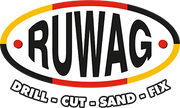How to clean your Power Drill
Cleaning your power drill should be a regular part of keeping your drill maintained. If you want your tools to work properly, they need to be clean. This will also ensure that they last for many years without any problems. Over time, your drill is exposed to dust, particles, lubricant and other debris. If you do not clean your drill, sharp edges will start to dull, the motor will be at risk of getting clogged and your drill will stop working properly. This can end up costing you a lot of money, especially if parts need to be replaced or your entire drill needs to be replaced.
In this guide, we share some tips on how to clean your power drill to keep it working properly without any problems.
Cleaning Your Power Drill
A clean power drill will work better, last longer and save you a lot of time, hassle and money. Here are some of the steps you’ll need to do to keep your drill clean.
Get Ready
The first step to cleaning your drill is to get everything you will need. It’s best to have protective gloves and gear when handling any power tool. You’ll also need a surface that is stable and free of clutter. Tools that will make things easier include a small vacuum, compressed air spray, brushes, steel wool, corrosion protector, and an Allen wrench. Once you’ve got everything ready, you can begin cleaning.
Remove Dust
This is the first and most important step. All power tools will have a buildup of dust from regular drilling. This dust isn’t always easy to see. The simplest way to remove dust is to use a mini vacuum to remove as much dust as you can. You can clear out vents using compressed air. Take all removable parts off the drill to clean separately and also check around moving parts, including chucks. Plastic or PVC parts can be dusted with a damp cloth. Filters should also be cleaned with a vacuum and replaced if needed.
Remove Rust
Rust can cause a lot of damage to your drill and drill bits if left to worsen. You can use steel wool or a stiff brush to carefully remove any signs of rust in metal parts. You’ll need to be gentle when using steel wool on metal parts to avoid scratching the surface. A degreaser can make it easier to remove stubborn rust spots. Once the rust is gone, use a corrosion protector spray to prevent further rust from accumulating.
Check Parts
Now that the drill has been cleared of dust and rust, it’s time to do a thorough check of all parts. Pay attention to moving parts to check that they’re working properly and moving freely. Check that fasteners are connected properly. While you’re checking drill parts, it is also a good idea to listen for any strange noises. These could indicate that your drill needs to be lubricated. Next, use your Allen wrench to adjust any loose hex head bolts. Finally, check the power cords and plugs to make sure that none are frayed or damaged.
Store Correctly
Once you’ve finished cleaning, you will need to make sure that your drill is stored correctly. Always keep your tools somewhere dry, cool and safe. Keep tools in designated places, either in containers or hanging on a wall away from anything that could result in damage. Don’t leave your drill on your work table, where it can be forgotten. Get into the habit of cleaning your drill and then packing it away after every use.
These tips should keep your tool working well for many years to come. Another way to ensure that your tool performs at its best is to always choose high-quality drill bits. Ruwag offers a wide range of bits that can be used in your power drill.

